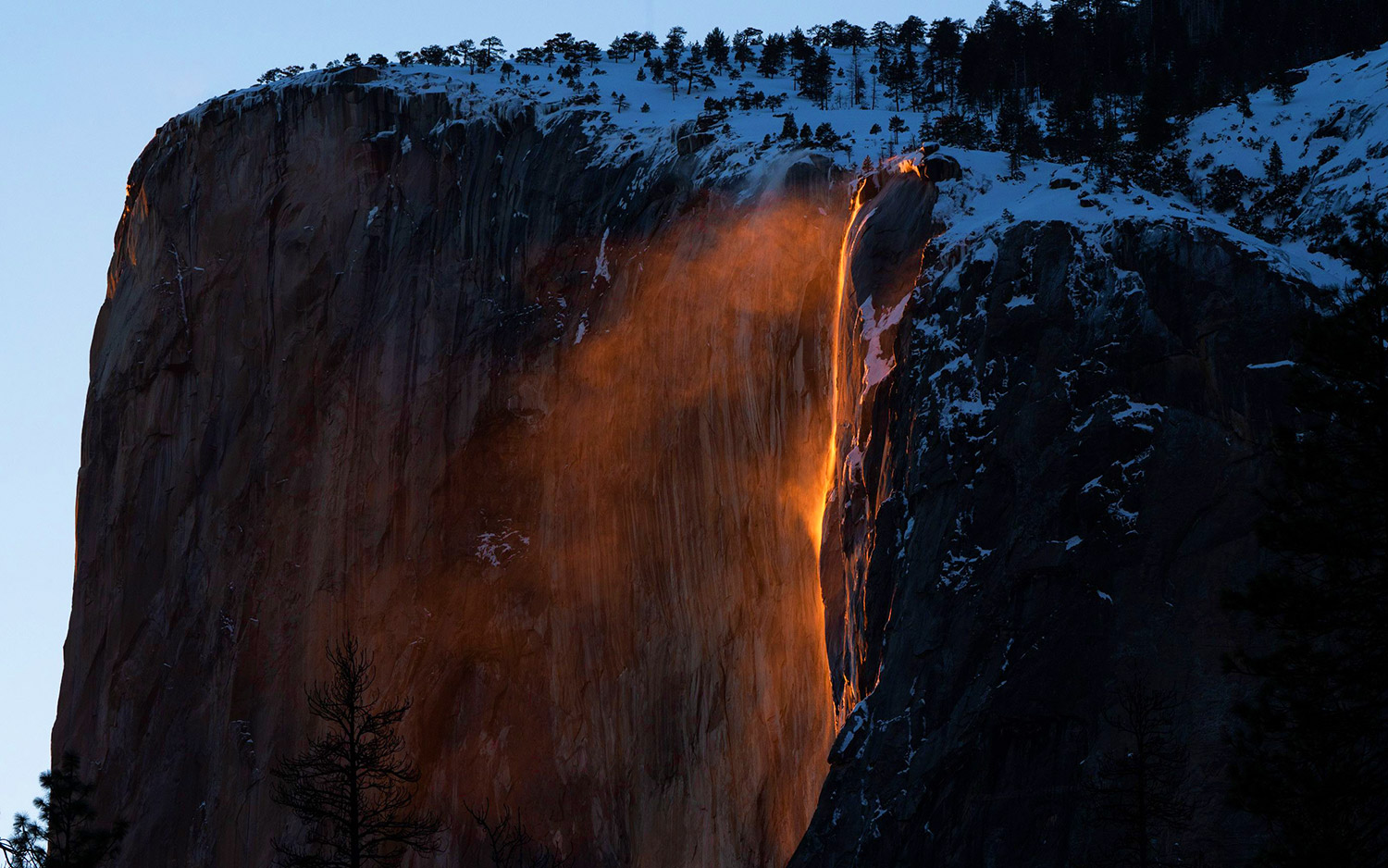A Stunning 'Firefall' Flared to Life in Yosemite This Week

Earlier this week, a band of flaming orange light poured down the face of Yosemite National Park's most iconic cliffside.
It wasn't an impromptu eruption of magma (you'd be more likely to spot one of those in Yellowstone). It wasn't hot at all. It was the latest example of the annual phenomenon known as a "firefall" — a sublime trick of winter light that mixes melting snow with the setting sun.
Yosemite's firefall occurs almost every year around mid-February to the end of the month, Live Science previously reported, when the snowpack atop the park's El Capitan rock formation begins to melt and flow down the cliffside, forming a seasonal waterfall known as Horsetail Fall.
As the meltwater plunges 1,500 feet (457 meters) to the ground, the setting sun throws its light against the falls. If the sky is clear and the sun is positioned precisely in the western sky, that setting sunlight paints the the water with fiery orange, yellow and pink light.
It's a precise twilight magic trick that lasts only about 10 minutes a day under optimal conditions — "even some haze or minor cloudiness can greatly diminish or eliminate the effect," the National Park Service wrote on its website. Still, that hasn't stopped thousands of tourists and park-going paparazzi from showing up every year in hopes of catching a glimpse.
As the myriad photos and videos posted to social media attest, Yosemite's firefall is a privilege to behold — but it's not a guarantee. When snowfall in the park is weak, as it was in 2012, visitors might be disappointed to find a "firedrizzle" instead.
- Yellowstone and Yosemite: Two of the World's Oldest National Parks in Photos
- Photos: Take a Tour of the Spectacular Yosemite Valley
- Gallery: Most Famous Waterfalls in the US
Originally published on Live Science.
Sign up for the Live Science daily newsletter now
Get the world’s most fascinating discoveries delivered straight to your inbox.

Brandon is the space/physics editor at Live Science. His writing has appeared in The Washington Post, Reader's Digest, CBS.com, the Richard Dawkins Foundation website and other outlets. He holds a bachelor's degree in creative writing from the University of Arizona, with minors in journalism and media arts. He enjoys writing most about space, geoscience and the mysteries of the universe.









